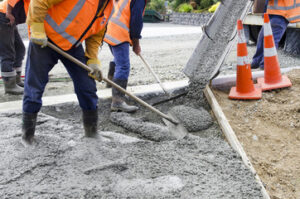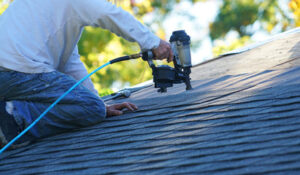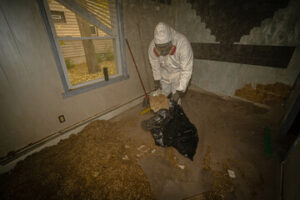Concrete Repair Bismarck involves a combination of products and techniques. Choosing the best repair method depends on the severity of the damage and the desired outcome.

For example, addressing hairline cracks now can prevent more serious structural problems from arising in the future. Chloride ion testing can help inform what kind of protective treatments may be needed.
Concrete cracks are a normal part of the aging process and can cause structural damage if left unchecked. Even the smallest hairline cracks should be addressed as soon as possible to avoid potential hazards and extend the life of the concrete surface.
The severity and root causes of the cracks determine which repair method is most appropriate. For example, settlement cracks caused by ground movement require a different approach than structural cracks that develop due to overloading or stress corrosion.
To properly repair concrete cracks, start by cleaning the affected area with a wire brush and chisel to remove any loose debris. Using the proper preparation technique will ensure that the crack filler adheres to the existing concrete.
Once the crack has been cleaned, you can apply a concrete patching compound or filler to the damaged area. Ensure that the crack is thoroughly filled and smoothed to achieve a seamless finish. Using a caulking gun to apply the filler will make the job easier and quicker.
It’s important to choose a high-quality repair product designed for the type of concrete surface you have. There are many DIY products on the market that may not be durable or long-lasting, so if you’re planning on doing the repairs yourself, it’s best to consult with a professional to learn about the available options.
When the concrete has cured, it’s a good idea to protect it with a concrete sealant. This will prevent further moisture ingress and help the repaired concrete resist abrasion and chemicals.
Identifying and addressing the causes of concrete cracks is the most effective way to prevent future problems. Whether it’s spalling, shrinkage, settlement, or freeze-thaw cracks, the right repair method will ensure that your concrete is safe and stable for years to come.
Spalling
Spalling is a telltale sign that concrete surfaces are in trouble. It’s not just unsightly, but it also reveals underlying structural problems and can cause significant safety hazards. In addition, it leaves the surface more permeable, allowing water and other substances to seep in, further damaging the structure. Regular inspections and prompt repair of spalling are key for preserving the structural integrity of concrete surfaces.
Spalling can manifest in a variety of ways, from small pock marks and discolorations to large chunks of concrete breaking off. Regardless of the size or scope of the damage, there are several different repair methods that can be used to restore concrete surfaces and prevent future spalling.
Patching: This method involves placing a patch over the damaged area and is ideal for repairing smaller areas of spalling, cracks, and other surface issues. It is typically done using a concrete patching product that matches the composition of the existing concrete. In many cases, it may be appropriate to apply a bonding agent in order to ensure strong adhesion between the old and new concrete.
Resurfacing: A resurfacing solution is typically a more effective method of addressing extensive areas of spalling, cracks, and surface damage than patching alone. It can be applied to nearly any type of concrete surface and is often more cost-effective than replacing the entire surface. It is important to partner with a qualified contractor to ensure the correct surface material is selected, poured, and cured in order to get the best results.
Replacement: In some cases, it may be necessary to replace the entire section of the concrete in order to resolve severe spalling and other structural issues. This option should be considered when the existing concrete is unable to support any existing or anticipated loads. It is essential to work with a knowledgeable and experienced contractor when choosing this repair method in order to ensure that the proper type of concrete is selected and properly poured, cured, and reinforced.
Although some spalling is inevitable in colder climates and as concrete ages, there are steps that can be taken to minimize damage and protect surfaces. By taking the time to perform routine maintenance and inspections, ensuring that the correct concrete repair products are used, and keeping up with regular cleaning, it is possible to extend the life of concrete surfaces and avoid costly repairs in the future.
Leaks
The network of piping that runs underneath a concrete slab is responsible for transporting fresh water to your home and removing wastewater. Plumbing issues in this system can cause a serious problem known as a slab leak, and the impact can extend into living areas of the house. Fortunately, there are some telltale signs that can help you know when it is time to call in the experts.
Unexplained puddles on the floor or wet spots around windows are clear indicators that there is a leak under the concrete. If left unaddressed, a slab leak can lead to mold, mildew, and structural damage in living spaces.
Whether you’re dealing with active leaks or a history of past leaks, there are several ways to repair concrete slab leaks and restore integrity. Surface patching with hydraulic cement or epoxy injection can offer temporary relief, but they do not address the underlying issue of water infiltration into concrete structures. In fact, these traditional methods can actually make the problem worse by exposing the reinforcing bars to moisture and allowing the cracks to propagate.
Leaks in concrete slabs are often caused by faulty or outdated pipes that are prone to corrosion. If you have aging or worn-out pipes, it’s important to have them replaced with new ones that are designed for modern plumbing systems. This will reduce your risk of water leaks and protect your home from costly damage in the future.
If you’re looking for a less disruptive way to fix your slab leaks, pipe re-routing is an option. During this process, the plumber will bypass the damaged area of the pipe by routing it through the walls or ceiling. This method avoids the need for invasive excavation and can be completed in as little as a day.
For a permanent solution to slab leaks, you can use polyurethane grout injection. This advanced method targets leaking concrete at the source with a liquid formula that fills cracks and bonds them, creating a strong and durable seal. Polyurethane injection is also non-toxic, non-corrosive, and safe for the environment.
Water Damage
Concrete is sturdy and rugged, but even this rock-solid material has its weaknesses. One of the biggest is water, which can damage concrete over time in ways that aren’t just unsightly but can also lead to structural issues, mold growth and safety hazards. Learn how and why moisture harms concrete and how to prevent and repair it.
The first step in mitigating water damage is to identify the source of the problem, which may be a leaking roof or a plumbing issue. Once the issue has been addressed, the next step is to assess the condition of the concrete and determine if it requires patching or replacement.
Cracks, spalling and other signs of water damage can be repaired using concrete patching materials that are specifically formulated to adhere to concrete. These products can be purchased from hardware stores and come in a variety of colors to match the color of your concrete. When preparing to use these products, it is important to prepare the damaged area by cleaning and removing any dirt or debris that may be present on the surface. It is also a good idea to wear personal protective equipment when preparing and mixing patching materials.
Water damage to concrete can also be caused by corrosion of the reinforcing steel that is often used to add strength and support to concrete structures. The chemical reaction that takes place between cement and water during the hydration process is essential to concrete’s strength and hardening. However, over time, water can penetrate the concrete and reach the rebar rods that are used to reinforce it. When these rods corrode, the concrete around them weakens and is prone to damage.
Another sign of water damage to concrete is when the surface appears swollen or enlarged, which is a result of trapped water in the pores and cracks. This water can freeze during cold temperatures and expand, which causes the concrete to shift, crack and crumble. The most severe cases of water damage to concrete can create holes in the surface, which is known as spalling.



